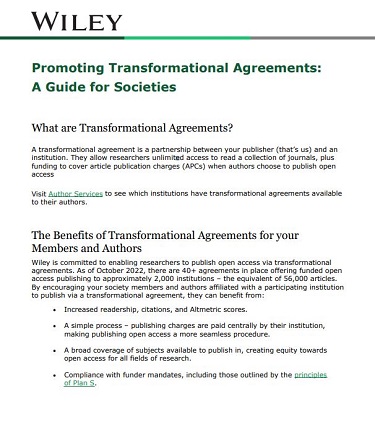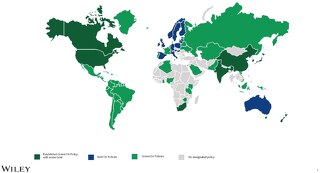how-much-where-and-when-do-members-want-open-access
October 15, 2019
Is Open Access equally important to all members? We know from our 2019 Wiley Society Member Survey that members want societies to provide more Open Access publishing. But who wants OA the most, and when is OA publishing less important? We dug into the data to find any differences societies need to pay attention to.
Awareness of Open Access
Last year, 65% of members told us that societies should promote OA. It was almost the least important thing to members, much less critical than publishing a society journal (89%) or providing education and training (83%). This year, the value of having an Open Access strategy increased to 74%, and what’s more, 67% said they want their society to provide more Open Access publishing.
On the flip side, if your society already publishes one or more Open Access journals, make sure your members know about it: 19% aren’t sure whether their society publishes OA or not, and 13% don’t know if their society publishes a journal at all. (Let’s hope these are mostly the same people!)
Understanding Open Access
Societies can also do more to help members understand what Open Access means. When we asked respondents whether they agreed with basic definitions of green, gold, and hybrid open access, only 61% could identify hybrid OA and more people recognized the definition of gold OA than the definition for general Open Access.
More established members (those who have been a member 11+ years) are especially likely to need more help understanding the nuts and bolts of OA, while newer members will probably be more familiar with different models of Open Access publishing.
Definition | % Agreed
|
Open Access provides free access to funded research via an open license and payment of a publication fee by the author or research sponsor | 73% |
Gold Open Access is when all of a journal’s content is available for free on its website | 76% |
Green Open Access is where the author self-archives the research on a freely-accessible website | 70% |
Hybrid Open Access is when a journal provides open access for certain articles, which are funded by the author or other sponsor, along with other articles that are not free to access | 61% |
Publishing Open Access
While three-quarters of members are mostly satisfied with the access to society content that they personally receive as members, only a little more than half are happy with their society’s engagement with Open Access publishing.
Publishing Open Access is particularly important for recruiting newcomers to your field: 85% of students and 75% of researchers with less than five years of experience told us that societies need to do more OA publishing.
Researchers in the USA show the least demand for more OA (61%), but if your society is interested in growing membership in Africa or the Middle East, try emphasizing Open Access in your outreach: 84% in Africa and 82% in the Middle East want more society Open Access opportunities.
More researchers from the Middle East (71%) have published in an Open Access journal than from anywhere else, too. Interestingly, while research funder mandates for Open Access are especially strong in Europe, fewer researchers (56%) there told us that they’ve published their work under an OA model compared to those in the Middle East and compared to researchers in Central Asia (66%), Africa (65%), or the Asia-Pacific region (64%). The amount of OA publishing in Europe beat out only the USA, where just 46% reported that they’ve published their work Open Access. Demand for more society OA publishing among members seems to be less tied to their local funding environment and more connected to how much Open Access publishing they’ve done themselves.
This also fits with the response we saw when we asked about society funds to cover Open Access Article Publication Charges (APCs). Researchers in Europe are also less motivated to join a society by the offer of funds to help with APCs, perhaps because finding funds for APCs isn’t a particular challenge for them. Funding help for APCs would be a big draw for members in Africa and Central Asia, though, which are also the two places learned societies are most likely to find new members.
Beyond Open Access
Open Access is just one means of increasing openness in research, although it often dominates the conversation. Opening up research by encouraging data sharing, transparent peer review, and improving recognition of the many different ways people contribute to a research article are all important too. We’ll be diving into more detail on how members want their societies to support open research–and help them collaborate more–in an upcoming post. So, stay tuned!
For more on why members join and why they renew and for resources to help you make decisions including decision trees, toolkits, and key trends, check out the Wiley Society Member Resources website.










